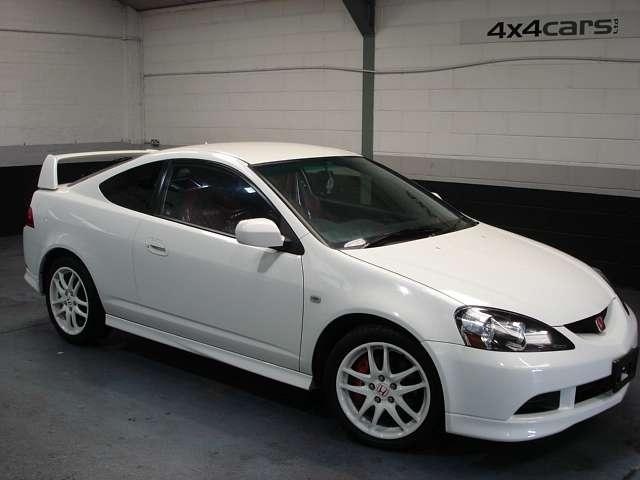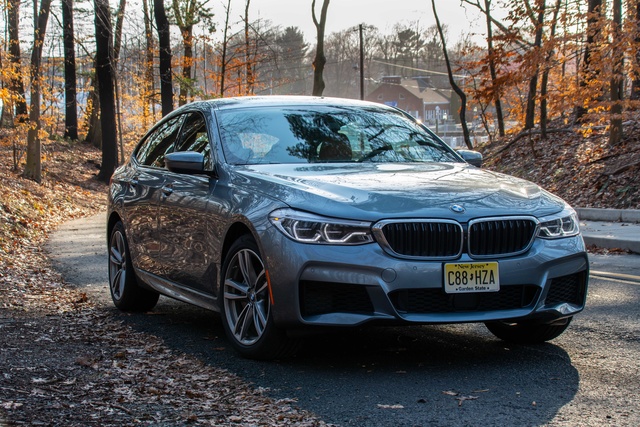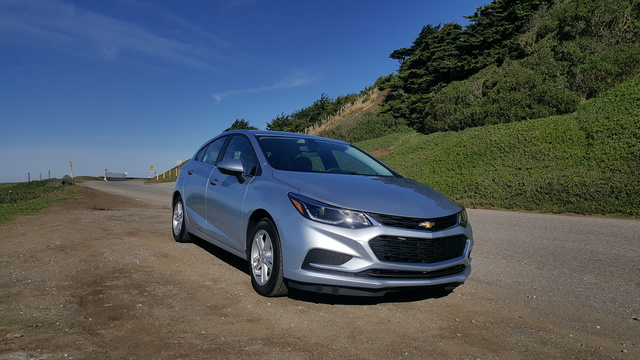The Honda Odyssey has been providing safe, comfy family transportation for almost 30 years now, and its basic recipe has remained the same for much of that time. It’s a big box on wheels, like other minivans, but its driving dynamics skew more towards sedan-like lightness. There’s a big V6 engine up front, and it drives only the front wheels. Inside, there’s seating for seven, enough cupholders to make Dairy Queen shareholders happy, and a bevy of family-friendly features.
On newer models, those features include CabinTalk and CabinWatch, which allow parents up front to monitor what’s happening in the second and third rows and make their voices heard if necessary. Aside from these new-fangled extras, the Odyssey is just a versatile and practical vehicle overall, with sliding second-row seats and plenty of active safety features. Honda added them pretty early, so even decade-old ones have a few.
Those electronic driver assistance systems, and the Odyssey’s robust crash structure, have earned it many awards from the Insurance Institute for Highway Safety (IIHS) and five-star overall ratings in the U.S. National Highway Traffic Safety Administration’s (NHTSA) evaluations.
All these features and Honda’s reputation for durability make the Odyssey a safe family choice, though it doesn’t offer some things that competitors do. There’s no all-wheel drive or hybrid version (as on the Toyota Sienna or the Chrysler Pacifica), and some competitors (like Chrysler and Dodge) offer even more storage versatility.
Not all Odysseys are mechanically flawless, either. Minivans are vehicles parents rely on, so reliability issues are often quickly noticed and frequently reported compared to, say, two-seat sports cars. Most Odysseys are rock solid, but there are better and worse eras and transmission issues seem to be a recurring problem in various generations. In this guide, we’ll break down each iteration since the Odyssey’s 1994 debut.
Honda Odyssey: Cost, Reliability, and the Best Years to Buy
- Frequently Asked Questions
- Honda Odyssey Pros and Cons
- Honda Odyssey Generations
- Fifth Generation (2018-Present)
- Fourth Generation (2011-2017)
- Third Generation (2005-2010)
- Second Generation (1999-2004)
- First Generation (1995-1998)
Frequently Asked Questions
Which Honda Odyssey years are the best?
The first (1995-1998) and fourth (2011-2017) generation Odysseys both have impeccable reliability records. While there are some complaints about each, they’re broadly the best ones from a long-term durability standpoint. Early models are rare now but were durable enough to withstand years of tough taxicab duty. Among the fourth-generation models, 2012 and 2013 Odysseys tend to draw the most complaints, but even they have pretty good records. 2014 also saw the addition of many active safety features to the Odyssey, which makes these 2014 to 2017 models preferable over earlier years.
What are the worst Honda Odyssey years?
The third-generation Odyssey, built from 2005 to 2010, draws the largest number of quibbles from owners. According to outlets like Car Complaints and RepairPal, the transmission issues of the second-generation model persisted in the early years of the third-generation model, while other sources list an abnormally high number of complaints in other areas for the 2009 and 2010 models, including suspension, electrical, and HVAC issues. 1999 to 2004 second-generation models have a good record except for one really huge flaw: their transmissions, which just don’t hold up very well.
Is a used Honda Odyssey a good deal?
It can be, yes. The Odyssey tends to have stronger resale values than other minivans like the Dodge Caravan or Kia Sedona, so you might have to pay more to get one model-for-model. But it’s also a good value in that it’s a good product loaded with features families like. Fourth and fifth-generation models also come with lots of safety gear that wasn’t necessarily available on some competitors. In our research, we were able to find plenty of decent fourth-generation Odysseys with under 120,000 kilometres for $25,000 or less. Fifth-gen models cost more, and you’ll need $30,000 minimum for a good one.
Honda Odyssey Pros and Cons
Pros:
- Comfy and spacious
- Lots of family-friendly features
- Lots of safety awards over the years
Cons:
- Tends to be the highest-priced used minivan
- No AWD or hybrid options
- Not the most reliable Honda vehicle
Honda Odyssey Generations
Fifth Generation (2018-Present)
Honda rarely ever changes the basic Odyssey recipe, and it didn’t radically reinvent it for the fifth generation. It’s a little narrower and taller but rides the same wheelbase, only this time Honda included more ultra-high-strength steel, aluminum, and magnesium in its robust unibody structure. This reduced the van’s weight by 34 kilograms (75 pounds) despite the inclusion of many new electronic features and the accompanying wiring. It also meant a 44% increase in structural rigidity, which means a quieter cabin, an improved crash structure and fewer rattles and squeaks over time.
In terms of layout and style, the changes were less dramatic. This Odyssey still uses the 3.5-litre J-Series V6 that has powered every Odyssey since 1999, but it now makes 280 horsepower and 262 lb-ft of torque. Honda also introduced new nine- and ten-speed automatic transmissions, though all Odysseys were standardized on the ten-speeder from 2020. Usually, more gears means fuel savings, but the fifth-generation Odyssey returns around the same 10.6 litres per 100 kilometres combined average as the fourth-gen model.
That’s not awful, but the hybrid Toyota Sienna and plug-in hybrid Chrysler Pacifica do better, and both offer things the Odyssey doesn’t. In the Sienna’s case, those are available all-wheel drive and a standard hybrid drivetrain. In the Pacifica PHEV, you get short-range fully electric driving and more luxury. Kia’s new Carnival, introduced in 2022, is another good competitor, but it also lacks all-wheel drive and has also historically not had a hybrid powertrain available, though that’s coming for 2025.
Honda does offer a whole lot, however, in the three-trim Odyssey lineup (a more basic fourth trim is being added for 2025). While the top Touring and Black Edition trims are very pricey, even the basic EX-L has the full Honda Sensing suite of adaptive safety technology, including a collision-mitigation braking system, road-departure mitigation system, blind-spot information system, a cross-traffic alert system, multi-angle rearview camera, and adaptive cruise control with low-speed follow. In Canada, it’s also got seating for seven including heated front seats and a heated steering wheel, a moonroof, a power tailgate, leather seating, the CabinTalk in-vehicle PA system, a rear-seat entertainment system, and more. The second-row seats are the “Magic Slide” variety, which allows much better access to the rear.
Buyers can layer on features like ventilated front seats, a hands-free power tailgate, an 11-speaker audio system, leather piping, wireless phone charging, and the CabinWatch camera system on higher trims.
This version of the Odyssey is still on sale and generally gets good reviews from families and critics alike, but the early years (2018 to 2021) have drawn some complaints for electrical glitches, issues with the infotainment system, and, unfortunately, transmission issues. These don’t seem to be exceedingly common, but test before you buy and see if you can obtain any maintenance records. These late-model Odysseys are the most expensive to buy used, and most of them command at least $30,000 in good condition and at least $35,000 for a higher-kilometre Touring model.
Fourth Generation (2011-2017)
New in 2011, the fourth-generation Odyssey was longer, lower, and wider than the van it replaced, and it loaded on the technology, especially in the upper trim levels. As with the third generation, this new one was an evolution of the ideas Honda settled on in 1999. It once again drove the front wheels with the J-Series V6, this time with 248 horsepower and 250 lb-ft of torque, regardless of trim level or year.
Most trims of the 2011 to 2013 model year Odyssey had a five-speed automatic transmission, while the top-level Touring had a six-speed automatic. The six-speeder became standard across the entire Odyssey lineup for 2014, and both of these transmissions are considerably more robust than the ones in earlier years, and have far fewer (but not zero) complaints.
The biggest innovations of these years concerned safety and in-vehicle technology. In 2014, the Odyssey received a long list of active safety features, including the LaneWatch camera, which is housed in the passenger side-view mirror and activates a display on the dash when the right turn signal is engaged. The van also included a blind-spot monitoring system, forward-collision warning, and lane-departure warning as options. At the time, only the Toyota Sienna offered similar gear.
Infotainment also underwent some changes in 2014 with the introduction of Honda’s i-MID “Intelligent Multi-Information Display” in the centre of the dash. The system was controversial because it relegated the main controls to tiny knobs and buttons. With the i-MID’s introduction to all Odyssey trim levels came standard Bluetooth Hands-Free Link, auxiliary input jack, USB integration, and a colour display screen.
2014 also saw structural updates, which improved the Odyssey’s performance in IIHS crash tests (2011 through 2013 models hadn’t done well in the IIHS small overlap frontal offset test). IIHS also noted at the time that the Odyssey had the lowest overall death rate of any vehicle in its class, with 0 reported deaths per million vehicles registered. It's also worth noting that the 2014 Odyssey was the subject of a number of complaints, most notably with the transmission again.
Overall, however, according to most reliability tracking outlets, this is the most trouble-free generation of modern Odysseys. It’s also old enough now to be available at a pretty good price. They’re still not cheap, however. A good, low-kilometre fourth-gen Odyssey with fewer than 120,000 or even 100,000 kilometres starts around $20,000, but as in the fifth generation, Touring models will cost even more, as much as $30,000 for 2016 or 2017 models. Since 2014 and newer models have all those active safety features, they’re the best ones to choose.
Third Generation (2005 -2010)
The third-generation Odyssey arrived for the 2005 model year, and with it, Honda introduced its Advanced Compatibility Engineering body structure, which claimed to distribute crash energy more evenly and away from the passenger cabin. The engines are largely the same throughout the third-gen run: a 255-horsepower J-Series V6. Horsepower ratings dropped to 244 after 2006, but it’s exactly the same engine; it’s just that the method for rating horsepower changed.
Honda made this Odyssey a little larger and heavier overall than the second-generation model, but it didn’t really gain any interior space. Some improvements to the interior did happen though, including adding a 60/40 split to the sliding “magic seat” second row and some clever new storage features like a lazy-Susan cargo organizer and a small optional eighth-passenger jump seat. In this pre-active safety era, equipment was mostly limited to the improved crash structure, three-point seat belts, and an arsenal of airbags.
Engines on the EX-L and Touring were slightly different from the lower trim levels in that they offered Variable Cylinder Management, which allowed the van to be rated as low as 13.5 L/100 km in the city and 9.1 on the highway. The sole transmission option was a five-speed automatic throughout the run, and it’s the same trouble-prone unit used in the earlier second-generation models, but in 2007 Honda beefed it up by changing it to the unit also used in its Ridgeline pickup.
These transmissions are still a weak point today and the single biggest complaint about this generation. Later years seem to have fewer problems, however. Unfortunately, the third-generation Odyssey also seemed to be plagued with quality issues, including body and paint problems that led to rust, noisy steering racks, and engine sensor issues. Those complaints seemed to persist until a 2008 facelift, but some outlets, like Consumer Reports, have identified complaints in exactly these areas on 2009 and 2010 models.
Finding clean, low-kilometre third-generation Odysseys is a challenge today, but they are out there, and they’re cheap. If you search long enough, you can find sub-150,000-kilometre examples of these vans in good condition for about $10,000 to $15,000. Their modest values reflect their age and repair record. If you have $15,000 to spend, look for a newer model.
Second Generation (1999-2004)
The second-generation Odyssey set the template for all subsequent versions, including the current model on sale today, and did so by directly emulating the most popular minivans on the market, the Dodge Caravan and Chrysler Town & Country. Instead of a small, four-cylinder MPV-style vehicle, the second Odyssey was a properly sized three-row minivan. It was 35 centimetres longer, 12.5 cm wider, and much more American feeling. Loosely based on the Accord’s platform, power came from Honda’s J-Series 3.5-litre V6, first with 210 horsepower and, after 2001, 240.
This redesign may not have been very original, but it proved to be a much better seller, and that’s why Honda hasn’t deviated from the formula since. Like the Chrysler products, it had sliding doors on both sides (powered on all but the base trim) and lots of interior versatility, with its fold-into-the-floor seats and an armada of cupholders and storage bins. This, and the promise of Honda’s traditional quality, made it very popular, but it wasn’t without a couple of major flaws, mostly concerning the transmissions.
Early second-gen Odysseys had a four-speed automatic transmission that developed an internal bearing problem, which led to lots of early failures and a highly publicized class action lawsuit. Honda replaced this early transmission with a five-speed automatic for the 2002 model year, but this transmission also developed problems early on, with worn third-gear clutches causing trouble that could lead to erratic shifting and even more problems. Honda did make efforts to rectify these problems, but they were never truly solved. Many other Honda and Acura models had similar issues, but the Odyssey seems to have come in for the most criticism.
These Odysseys are pretty rare now in good condition, so finding a sub-150,000 kilometre example will be difficult if you really want one. It is possible though, and they’re not expensive either. The best first-gen Odysseys shouldn’t cost more than $10,000. We also found some higher-kilometre units for as little as $4,000 to $5,000.
We’d recommend one with a full history file if you can find one, however, because of the transmission issues. It’s also worth noting that many slightly newer rival minivans, like the Dodge Grand Caravan, Chrysler Town and Country, and Toyota Sienna don’t cost much more and offer superior reliability records.
First Generation (1995-1998)
After extensive market research in the early 1990s, Honda took on the minivan market with the first-generation Odyssey for the 1995 model year. It looked like other minivans, but in many ways, it skewed closer to the European and Asian MPV class than the American minivans typified by the Dodge Caravan and Plymouth Voyager. It was filled with clever innovations but smaller than buyers expected, and its rear doors were conventionally hinged rather than sliding units as on most American-market alternatives.
Several interesting features were included in the Odyssey, which ended up being adopted throughout the minivan market. The original concept was inspired by a “personal jet.” As a result, the Odyssey has an optional centre aisle between captain’s chairs that allows access to the rear seat, and the third row folds down flat into the floor—essentially required equipment for any minivan today.
Just like the later Honda Fit subcompact, this Odyssey was designed to be as space-efficient as possible. That let Honda make it smaller and lighter, to save fuel and get by with four-cylinder engines at a time when other minivans were increasingly using V6s. It was full of good ideas and sold decently, but a significant number of them were fleet sales, as this roomy and efficient machine was adopted by taxicab drivers about a decade before they discovered hybrids.
The Odyssey was powered by the 2.2-litre four-cylinder from the base-model Accord. It also shared the Accord’s four-speed automatic transmission, fully independent suspension, and four-wheel disc brakes with antilock braking (ABS), that last feature being one that wasn’t always standard on other minivans at that time.
This is the only generation of Odyssey to also be sold by another automaker. As Isuzu exited the passenger car market in the early 1990s, it made a deal to share products with Honda. Isuzu got Civic and Accord-based sedans for the Japanese market as well as the Odyssey, which it sold here as the Oasis. In return, Honda and Acura got Isuzu’s Rodeo and Trooper SUVs, which became the first Honda Passport and Acura SLX. The Oasis proved a slow seller, and the collaboration ended after this first generation.
The oldest and most unusual Odyssey, the first-generation model, is also the most reliable. It’s exceptionally rare to come across these now in Canada, and when you do it’s not uncommon to find survivors with more than 300,000 kilometres on the odometer. Since survivors are rare now and the Isuzu Oasis version is virtually extinct, if you want one you’ll really have to shop around. If you do manage to find one, they’re trouble-free and light on gas, and you can pick them up for just $5,000. They haven’t had much interest from collectors, at least not yet.






